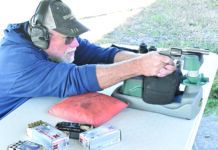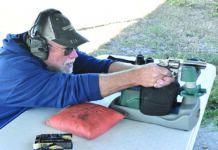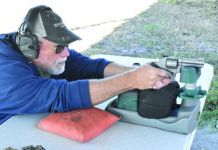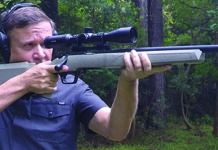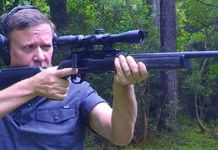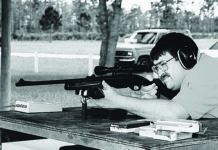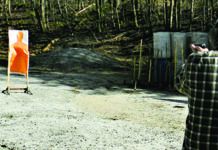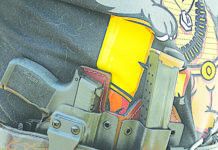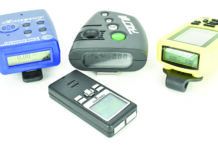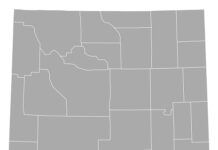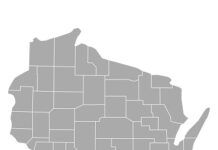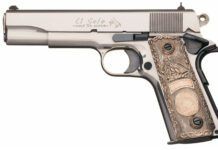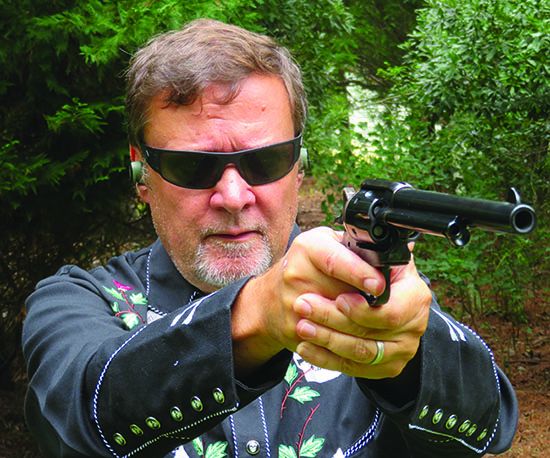Back in the Old West, there was a variety of six-shooters to choose from, but as years passed, many of these revolvers ended up in the bone orchard as new and modern models became available — just like today. Luckily, gun manufacturers resurrected some of these unique revolvers and are reproducing them today using stronger steel, better manufacturing techniques, and incorporating internal safeties. We acknowledge that these revolvers may not be Simon-pure compared to originals, but that doesn’t matter because these reproduction revolvers allow you to experience what it was like to wield these guns.
We looked at a total of four wheelguns, the first two of which were new sidearms chambered in 45 Colt, also widely called 45 Long Colt. (On Gun-Tests.com, see our New Shooter’s Guide, “45 Colt vs. 45 Long Colt vs. 45 ACP” for an explanation of these cartridges’ names.) Those two new guns were the Cimarron Firearms Co. Model No. 3, 1st Model American, and the Taylor’s & Company Cattleman Old Model Military Markings. Next month, we’ll look at a used Ruger Vaquero in 45 Long Colt, the old model that is no longer produced, and a Uberti 1872 Open Top Army CA910 in 44 Special.
These are single-action revolvers, so we did some thumb busting at the range and have plenty to say about what we experienced, but before we do that, here’s what we looked for in these guns. These Old West shooting irons were reviewed for accuracy, point of aim, trigger weight, ease of use, and sights. These revolvers would do well in Cowboy Action Shooting matches or plinking on a weekend.
Our first impression with these reproductions was that they had great balance and manageable recoil, and they required some hammer dexterity to make a long stretch of the thumb to cock them. Sights ranged from too tiny to see well, to large and very modern.
How We Tested
Our first order of business was accuracy testing using targets set at 15 yards and a range bag as rest. Things sped up when the targets were moved to 7 yards, and we fired the revolvers for speed using a two-hand grip and one-hand grip. Shooting hoglegs at speed really shows how well the shooter can manage recoil and how fast you can acquire the sights for follow-up shots. It also punches your cowboy card.
Naturally, we used some cowboy-powered ammo. Cowboy loads come in lower velocities for use in Cowboy Action Shooting competitions and offer less recoil. The are also a good option for plinking. In 45 Colt, we fired Hornady Cowboy loads with 255-grain round-nose flat-point (RNFP) bullets and Choice Ammunition with a 250-grain RNFP bullet. Also, we used a more modern Federal American Eagle load with a 225-grain jacketed soft point (JSP). It’s worth noting that these two revolvers are not compatible with +P ammo, only standard-velocity ammo.
Once we had a chance to fill our hands with these pistols, here’s what we learned about these reproduction equalizers.
Taylor’s & Co. Cattleman Old Model Military Markings RC1/550585
45 Long Colt
$700
Gun Tests grade: A
The Cattleman looks like a Colt that just came off the assembly line circa 1873 and approved by O.W. Ainsworth himself. The updated floating firing pin is a modern safety enhancement that gives the gun a different feel when cocking the hammer. The trigger was crisp. With low-velocity cowboy ammo, it was accurate and easy to operate fast.
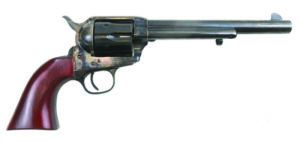
| Action Type | Revolver, single action, hammer fired |
| Overall Length | 13.1 in. |
| Barrel Length | 7.5 in. |
| Barrel Twist Rate | 1:16 in. RH |
| Sight Radius | 8.5 in. |
| Overall Height | 5.5 in. |
| Maximum Width | 1.6 in. |
| Weight Unloaded | 43.2 oz. |
| Weight Loaded | 48.4 oz. |
| Cylinder Gap | 0.010 in. |
| Capacity | 6 |
| Frame Finish | Case hardened |
| Barrel/Cylinder Finish | Blued |
| Frame Front Strap Height | 2.1 in. |
| Frame Back Strap Height | 3.4 in. |
| Grip | Smooth wood |
| Grip Thickness (max) | 1.5 in. |
| Grip Circumference (max) | 6.0 in. |
| Front Sight | Fixed blade |
| Rear Sight | U-Notch |
| Hammer Cocking Effort | 5 lbs. |
| Trigger Pull Weight | 2.5 lbs. |
| Trigger Span | 2.7 in. |
| Safety | Retractable firing pin |
| Warranty | 1 Year |
| Telephone | (540) 722-2017 |
| Website | TaylorsFirearms.com |
| Made In | Italy (Uberti) |
Uberti makes the Old Model to Taylor’s specifications and is a near clone of the original Colt Military model used by the U.S. Cavalry. It even reproduces the cartouche of Orville W. Ainsworth himself. Ainsworth was the first ordnance sub-inspector at the Colt factory from 1873 to 1874. He stamped the left grip with “OWA” and the last four serial-number digits on the cylinder when guns passed quality inspection. The butt grip strap is also stamped “F CO. 7 CAV.” similar to a revolver used by General George Armstrong Custer’s ill-fated 7th Calvary F Troop used at the Battle of Little Big Horn.
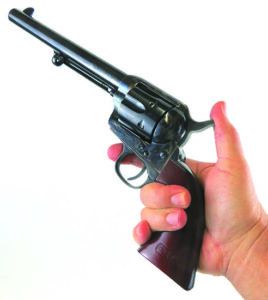
The fit and finish of the Old Model is superb, making this reproduction an excellent example of a Colt 1st Generation Military revolver. The frame and hammer have a bright case-hardened finish, and the barrel, cylinder, grip frame, and trigger wear a deeply blued finish. The one-piece walnut grip was perfectly fitted to the frame.
A modern safety enhancement is the retractable or floating firing pin that exerts no pressure toward the chamber, so in theory the Old Model can be carried fully loaded. Taylor’s recommends you let the hammer rest on an empty chamber, and we concur. When the hammer is cocked, a hand inside the hammer moves to engage the firing pin. From a full cock, the trigger is pulled and the hand locks the firing pin in the forward position until the trigger is released. The hammer looks traditional, and what gives it away is that the firing pin wiggles slightly instead of being fixed. Some of the savvier Colt SAA shooters could feel the hand operating when cocking the pistol, but most shooters will probably never notice the difference. The revolver also had three distinct clicks, whereas a Colt has four clicks. Elsewhere, the action felt slick, and the trigger pull was nice. You will need a screwdriver to field-strip the Old Model. A screw holds the base pin in place.
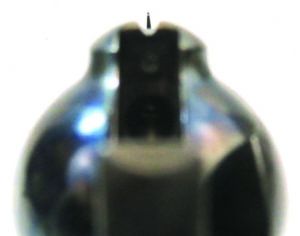
The revolver shot to point of aim, and we noticed it shot about 1 inch high at 15 yards, which is fine as long as you remember to aim at the 6 o’clock position to hit the target center. The trigger broke at 2.5 pounds, which was just right. With Choice ammo, the group was almost one large hole. Our best five-shot groups with Choice and Hornady ammo both measured 0.99 inches at 15 yards. With cowboy-powered ammo from Choice and Hornady, the Taylor’s curled in our hands on recoil, which was pleasant and easy to manage. The hotter Federal ammo had a more pronounced recoil, but it was manageable. The best group with Federal measured 2.09 inches.
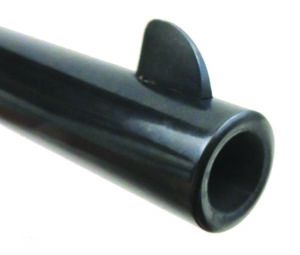
The Taylor’s shone during speed shooting. Using a two-hand grip and cocking the hammer with the support hand thumb, we were able to send lead fast downrange as well as keep groups at 2 inches. Just hold back the trigger and cock and release the hammer for rat-a-tat-tat fast shooting. Using a one-hand grip, we found that shooting was also fast, but it was a bit slower than the two-hand method. Using one hand, the gun curls in your grip, positioning the hammer spur near your thumb for the next shot.
To load, the hammer must be moved to the half-cock position. This allows the cylinder to freely rotate in clockwise rotation. There was plenty of room in the loading gate to drop cartridges in the cylinder. There was also a little wiggle back and forth in the cylinder to ensure the round dropped in the chamber. It was not a reverse-indexing cylinder, but the Taylor’s was still easy to load and unload. Most empties fell free, and for those cases that didn’t, we punched them out with the ejector. The ejector head is large and easy to operate, and because it is well away from a hot barrel, we didn’t burn ourselves.
The cylinder gap measured 0.010 inch, and the expectation was we’d get some lead splatter when firing, but this was not the case.
Our Team Said: The Old Model offered great accuracy with a crisp trigger. The action was smooth, and it was fun and easy to control in rapid fire. We appreciated the floating firing-pin safety system. The military markings make this revolver stand out from other 7.5-inch-barrel Colt SAA replicas. Buy this if you are looking for an outstanding, modernized SAA clone to shoot a lot.
| 45 COLT RANGE DATA | ||
| Hornady Cowboy 255-grain RNFP | Taylor’s & Co. Cattleman | Cimarron Model No. 3 |
| Average Velocity | 773 fps | 744 fps |
| Muzzle Energy | 338 ft.-lbs. | 313 ft.-lbs. |
| Smallest Group | 0.99 in. | 1.66 in. |
| Average Group | 1.28 in. | 1.87 in. |
| Federal American Eagle 225-grain JSP | Taylor’s & Co. Cattleman | Cimarron Model No. 3 |
| Average Velocity | 955 fps | 838 fps |
| Muzzle Energy | 456 ft.-lbs. | 351 ft.-lbs. |
| Smallest Group | 2.09 in. | 0.76 in. |
| Average Group | 2.50 in. | 1.06 in. |
| Choice Ammunition 250-grain RNFP | Taylor’s & Co. Cattleman | Cimarron Model No. 3 |
| Average Velocity | 773 fps | 870 fps |
| Muzzle Energy | 338 ft.-lbs. | 420 ft.-lbs. |
| Smallest Group | 0.99 in. | 1.05 in. |
| Average Group | 1.28 in. | 1.51 in. |
To collect accuracy data, we fired five-shot groups from a bench using a rest. Distance: 15 yards with open sights. We recorded velocities using a ProChrono DLX digital chronograph set 10 feet from the muzzle.
Special thanks to Eastern Outfitters (EasternOutfitter.com) of Hampstead, NC, for their assistance.
Written and photographed by Robert Sadowski, using evaluations from Gun Tests Team members. GT


